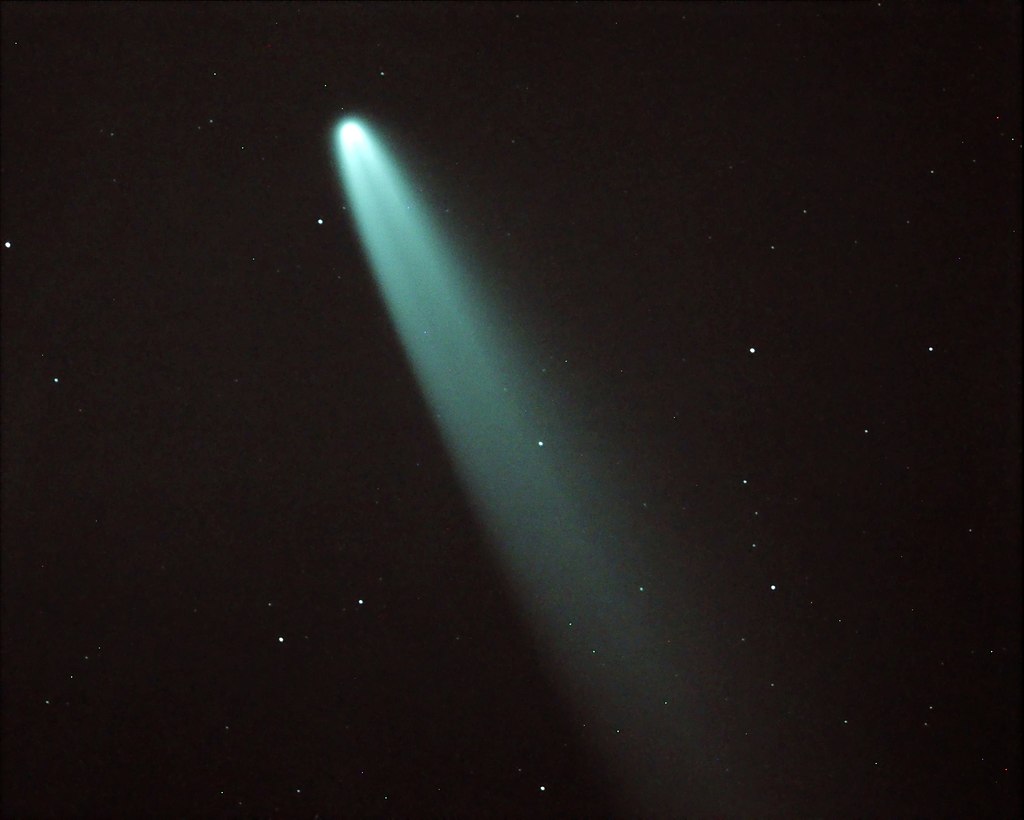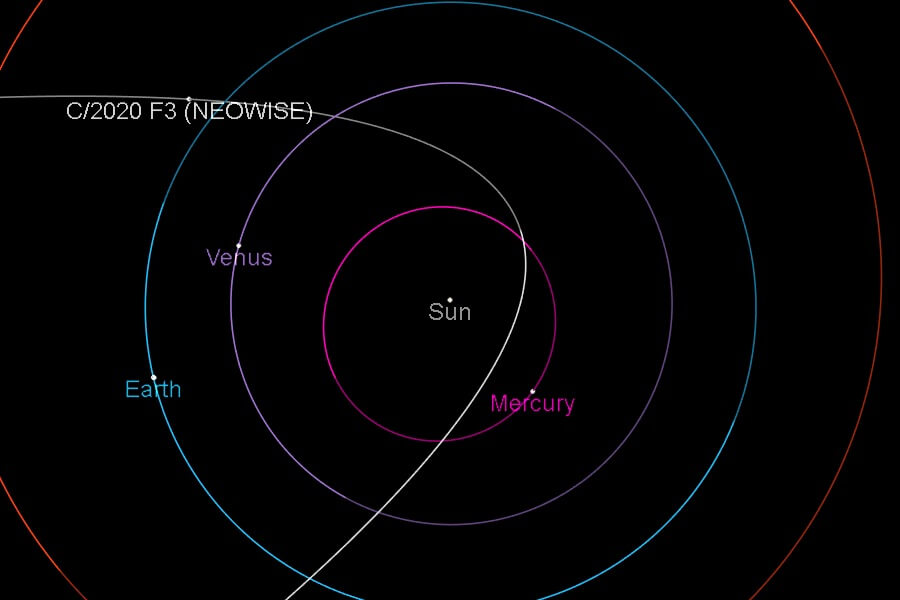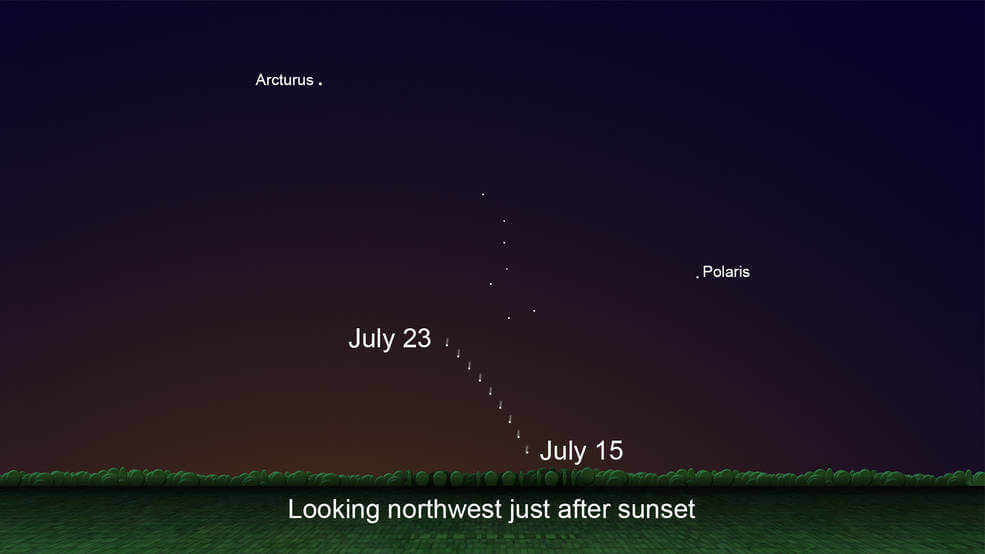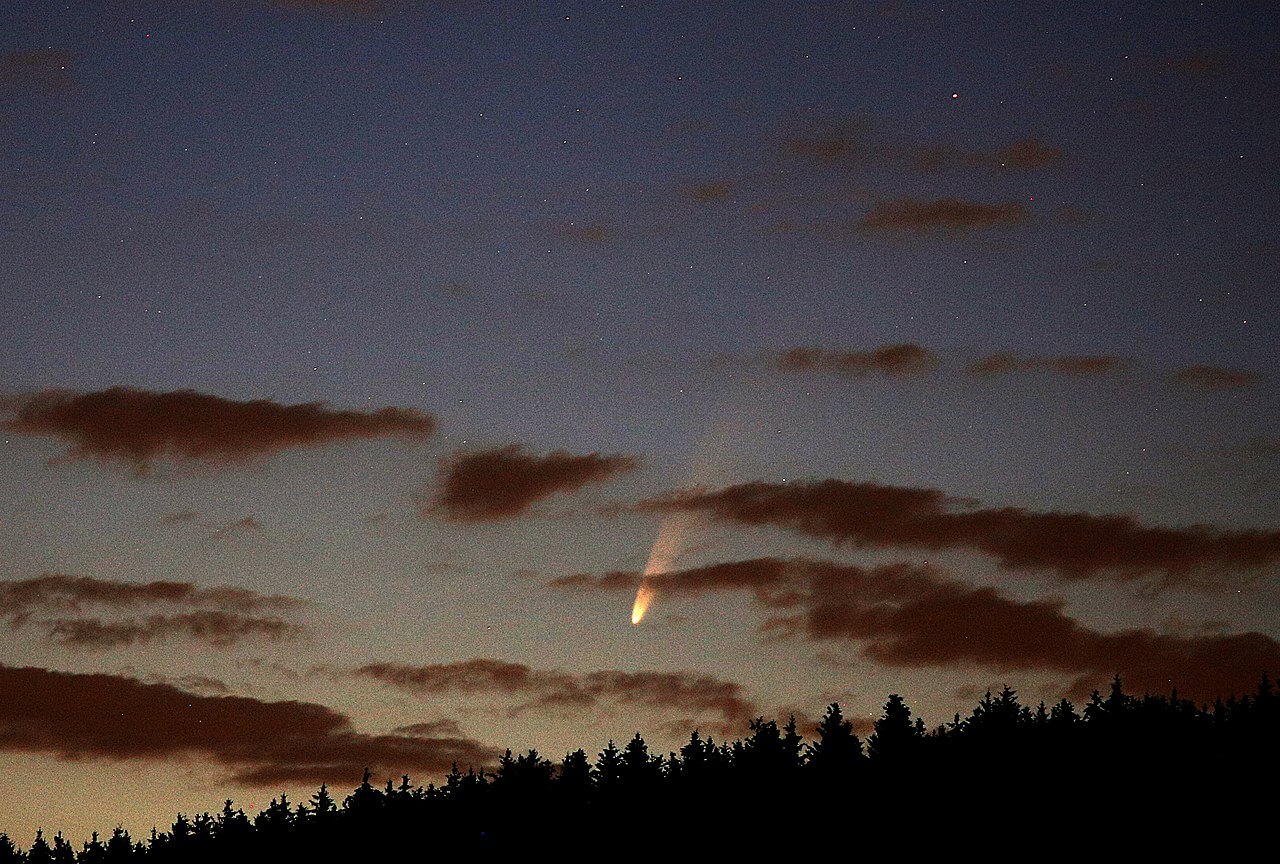Observers in the northern hemisphere hope to catch a glimpse of Comet NEOWISE as it traverses the inner solar system before it drifts into the depths of space.

Comet NEOWISE, also known as C/2020 F3, was a bright comet that was visible to the naked eye during July 2020. It was discovered on March 27, 2020, by the Near-Earth Object Wide-field Infrared Survey Explorer (NEOWISE) space telescope.
Comet NEOWISE made its closest approach to Earth on July 23, 2020, when it was about 64 million miles (103 million kilometers) away. It was visible low on the northwestern horizon just after sunset and before sunrise in the northern hemisphere.
The comet’s nucleus was estimated to be about 3 miles (5 kilometers) across, and it was surrounded by a glowing coma, which is a cloud of gas and dust that forms around the nucleus as it heats up from the Sun’s radiation.
Comet NEOWISE was the brightest comet to be visible from the northern hemisphere since Comet Hale-Bopp in 1997. Its stunning appearance made it a popular subject for astrophotographers and amateur astronomers alike.

For those who expect to see Comet Neowise for themselves, here is what to do:
- Find a place away from city lights with a clear view of the sky
- Just after sunset, look under the Big Dipper in the northwest sky
- If you have them, bring binoculars or a small telescope to get the best views of this dazzling display
Each night, the comet will continue to rise higher and higher above the northwest horizon as illustrated in the following graph:

Diagram showing the location of Comet C / 2020 F3 just after sunset, July 15-23.
Credits: NASA/JPL-Caltech
What exactly is Comet Neowise? What is it?
Comet NEOWISE is a celestial object that belongs to the family of small icy bodies known as comets. Comets are composed of a mixture of ice, dust, and rocky material, and they originate from the outer regions of the solar system.
Comet NEOWISE was discovered in March 2020 by the NEOWISE space telescope, which is part of NASA’s Near-Earth Object Observations program. This program is designed to detect and track asteroids and comets that could pose a potential threat to Earth.
Like other comets, NEOWISE has a highly elliptical orbit that brings it close to the Sun and then out to the far reaches of the solar system. As it approaches the Sun, the heat causes the comet’s ice and other volatile materials to vaporize, creating a coma or a cloud of gas and dust around the nucleus. This process also produces a bright tail that points away from the Sun.
Comet NEOWISE was notable for its brightness and visibility from Earth, which made it a popular target for skywatchers and astrophotographers. It provided a rare opportunity to observe a bright comet from the northern hemisphere, and its appearance provided valuable insights into the composition and behavior of comets.

History and observations.
Comet NEOWISE, also known as C/2020 F3, was first detected on March 27, 2020, by the NEOWISE space telescope. NEOWISE stands for “Near-Earth Object Wide-field Infrared Survey Explorer,” and it is a NASA spacecraft that is designed to detect and track asteroids and comets that could potentially pose a threat to Earth.
After its discovery, Comet NEOWISE was closely monitored by astronomers around the world. As it approached the Sun, it began to brighten, and by early July 2020, it had become visible to the naked eye from some locations on Earth.

The comet made its closest approach to Earth on July 23, 2020, when it was about 64 million miles (103 million kilometers) away. At its brightest, the comet had a magnitude of about 0, which made it one of the brightest comets visible from Earth in the last two decades.
Observers in the northern hemisphere were treated to a spectacular view of the comet low on the northwestern horizon just after sunset and before sunrise. As it moved away from the Sun, the comet’s tail became more prominent, stretching across the sky and appearing as a faint smudge of light.

Observations of Comet NEOWISE were conducted using a variety of instruments, including ground-based telescopes, space telescopes, and spacecraft. These observations provided valuable insights into the composition and behavior of comets, and they will help astronomers better understand the origins and evolution of the solar system.